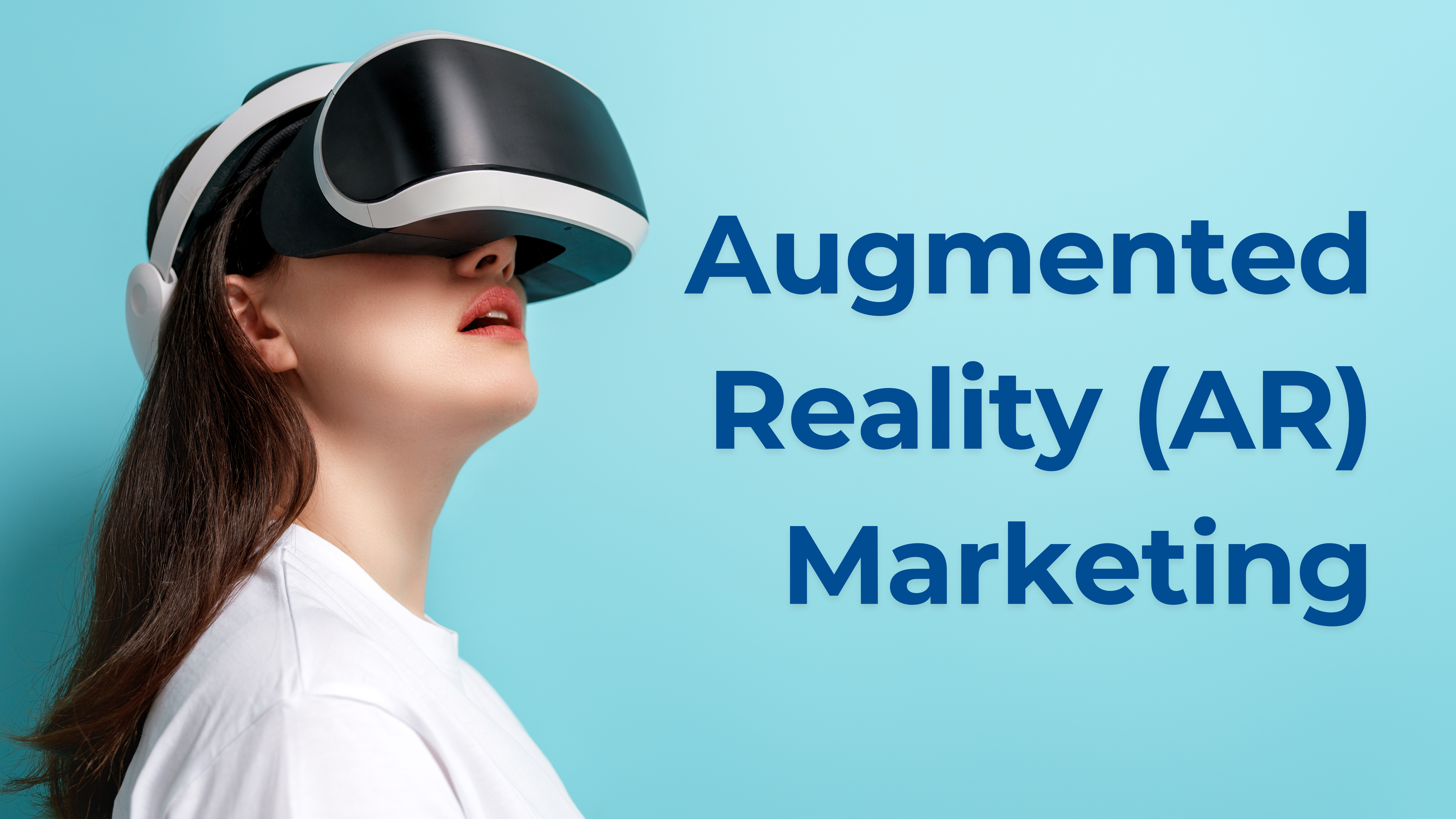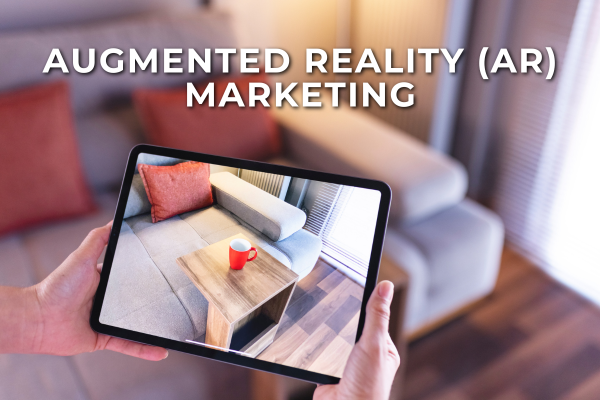
AR Marketing (Augmented Reality) is revolutionizing the way businesses interact with consumers by offering immersive, interactive experiences that blend the physical and digital worlds. In this guide, we’ll explore the concept, benefits, applications, and challenges of AR marketing to help beginners understand and leverage its potential.
Table of Contents
ToggleBenefits of AR Marketing (Augmented Reality)
Enhanced Customer Engagement
AR captures attention by providing a unique, interactive experience, making customers
more likely to engage with the brand.
Personalized Experiences
AR allows businesses to tailor content to individual preferences, increasing relevance and satisfaction.
Improved Product Visualization
Consumers can see how products look in real-life settings, such as trying on virtual clothes or
placing virtual furniture in their homes.
Higher Conversion Rates
By providing a better understanding of products, AR can reduce hesitation and increase purchase likelihood.
Memorable Branding
Innovative AR Marketing (Augmented Reality) campaigns leave a lasting impression, helping brands stand out in competitive markets.
Applications of AR Marketing (Augmented Reality)
AR Product Try-Ons
Examples: Virtual makeup, eyewear, or clothing try-ons.
Impact: Customers can visualize products before purchase, reducing returns and increasing confidence.
Interactive Packaging
Examples: AR-enabled QR codes on product packaging that unlock exclusive content or games.
Impact: Boosts engagement and adds value to the product.
Location-Based Augmented Reality (AR)
Examples: AR experiences triggered at specific locations, such as stores or landmarks.
Impact: Drives foot traffic and enhances on-site experiences.
Augmented Reality (AR) Advertising
Examples: Interactive ads where users can explore products in 3D or play branded AR games.
Impact: Increases engagement and captures attention in crowded digital spaces.
Event and Experiential Marketing
Examples: AR at trade shows or events, allowing attendees to interact with products or brand stories.
Impact: Creates memorable experiences and encourages social sharing.
Steps to Implement AR Marketing (Augmented Reality)
Define Objectives
Clarify goals, such as increasing brand awareness, engagement, or sales.
Understand the Audience
Analyze your target audience to ensure the AR experience resonates with their preferences.
Choose the Right Technology
Decide between app-based AR, web-based AR, or hardware-specific AR (like AR glasses).
Develop Compelling Content
Create high-quality, interactive AR experiences aligned with your brand and message.
Test and Optimize
Run tests to ensure the AR content works seamlessly and refine based on user feedback.
Challenges in AR Marketing (Augmented Reality)
High Development Costs
Creating AR experiences can be expensive, requiring skilled developers and advanced technology.
Technical Limitations
Not all consumers have devices capable of running AR applications effectively.
User Adoption
Some customers may be hesitant to try new technologies or find AR experiences unnecessary.
Content Fatigue
Overuse of AR gimmicks can lead to disengagement. It’s crucial to provide value through the AR experience.
Privacy Concerns
Collecting user data for personalized AR experiences must comply with privacy regulations.
Best Practices for Augmented Reality (AR) Marketing
Focus on Value
Ensure the AR experience provides practical benefits or entertainment rather than being a novelty.
Keep It Simple
Make the AR experience intuitive and easy to use for all customers.
Integrate Seamlessly
AR should complement your overall marketing strategy, not stand alone.
Promote the Experience
Use social media, email marketing, and other channels to inform customers about the AR feature.
Monitor Performance
Track metrics such as engagement, conversion rates, and customer feedback to measure success.
Examples of Successful Augmented Reality (AR) Marketing Campaigns
IKEA Place App
Allows users to visualize how furniture fits in their home.
Result: Improved customer satisfaction and reduced returns.
Virtual Artist
Sephora, Lenskart, Gucci Digital Sneakers, Zara AR Models, Chanel’s Lip Scanner Technology,
Farfetch’s Store of The Future Enables users to try on makeup virtually through their app.
Result: Increased app engagement and sales.
Pepsi Max AR Bus Stop
Transformed a bus stop into a virtual world with AR effects.
Result: Viral success and boosted brand awareness.
Future Trends in Augmented Reality (AR) Marketing
AR Shopping
AR will become an integral part of e-commerce, enhancing online shopping experiences.
Social Media Integration
Platforms like Instagram and Snapchat will continue to expand AR tools for brands.
AI-Powered AR
Combining AI with AR will enable smarter, more personalized interactions.
Wearable AR Devices
Advancements in AR glasses will create new opportunities for immersive marketing.
Sustainable AR Campaigns
Brands will focus on creating AR experiences that align with sustainability goals.
Conclusion
Augmented Reality (AR) marketing offers a powerful way to captivate audiences, enhance
customer experiences, and drive business growth. By understanding its applications, benefits,
and challenges, businesses can effectively integrate AR into their marketing strategies.
Start exploring AR marketing today to stay ahead in the competitive digital marketing landscape! 🚀


Wow, what an insightful post! Your perspective really shines through in every paragraph, and I love how clearly you break down the topic—it’s truly engaging. I recently put together a little roundup on oils that work wonders for curly hair and thought some readers here might enjoy. Keep up the fantastic work—I’m looking forward to your next post!